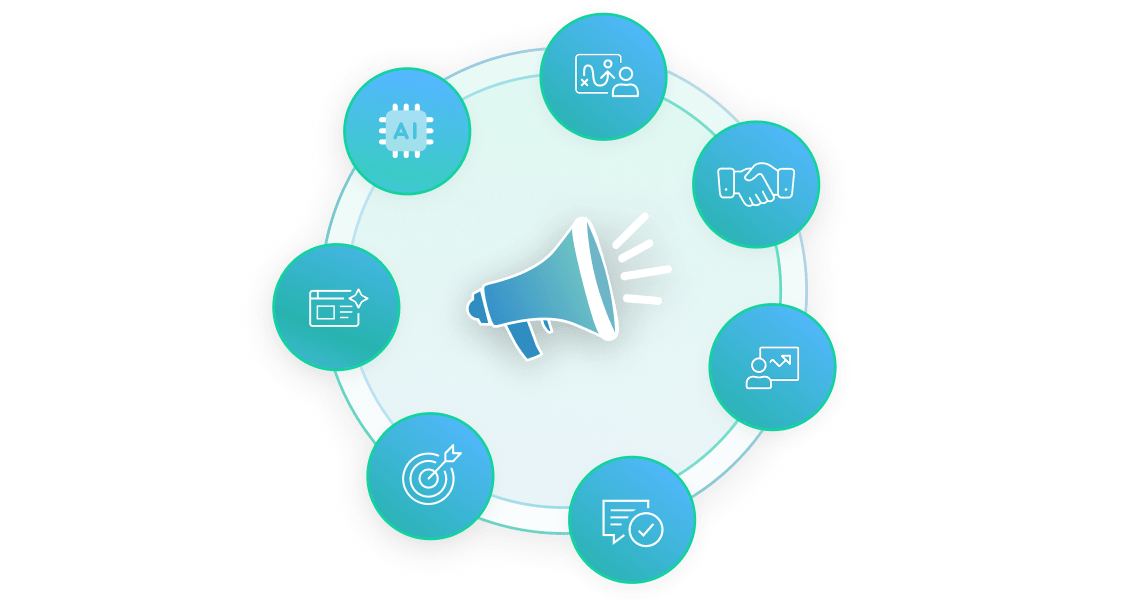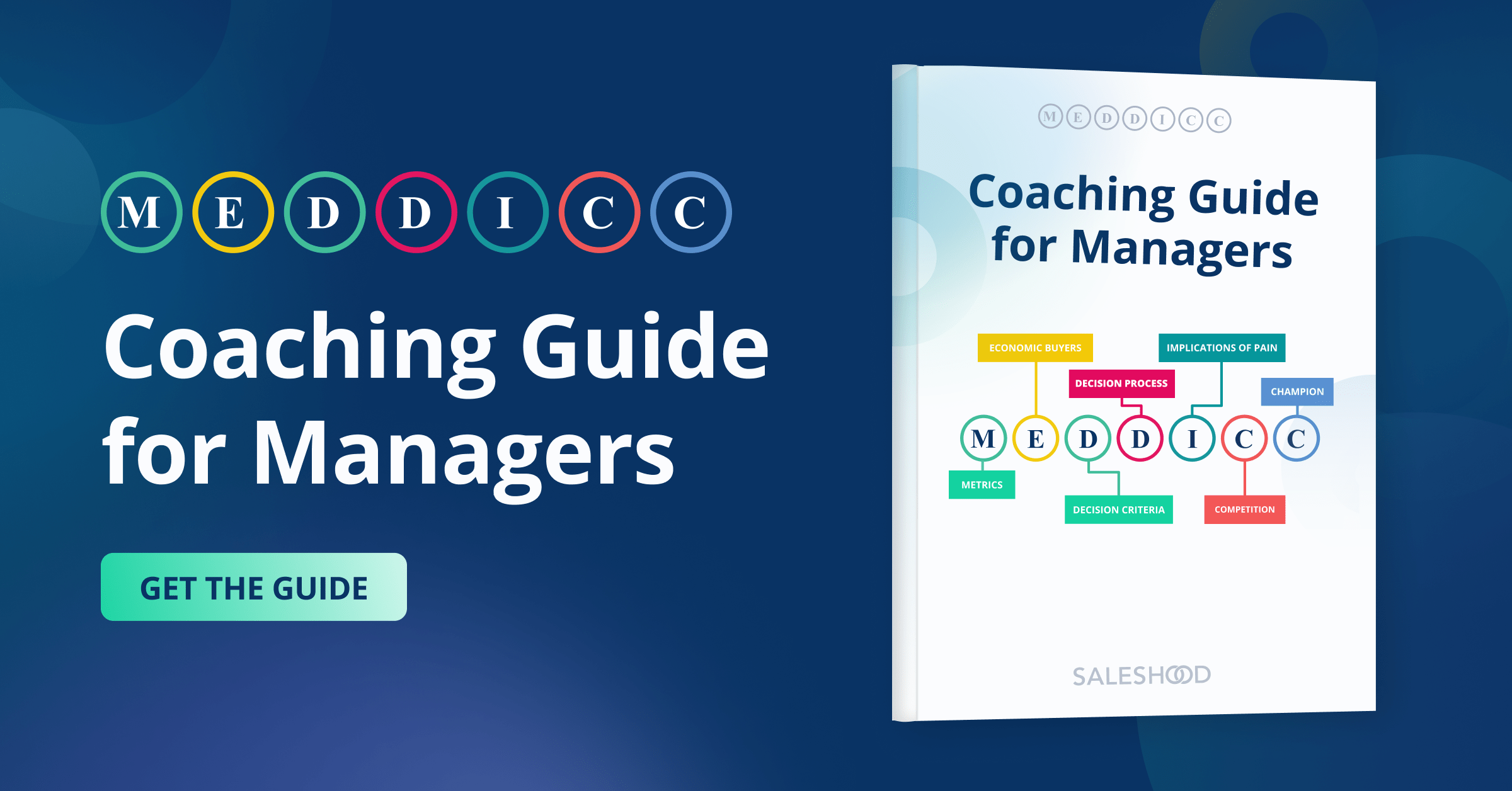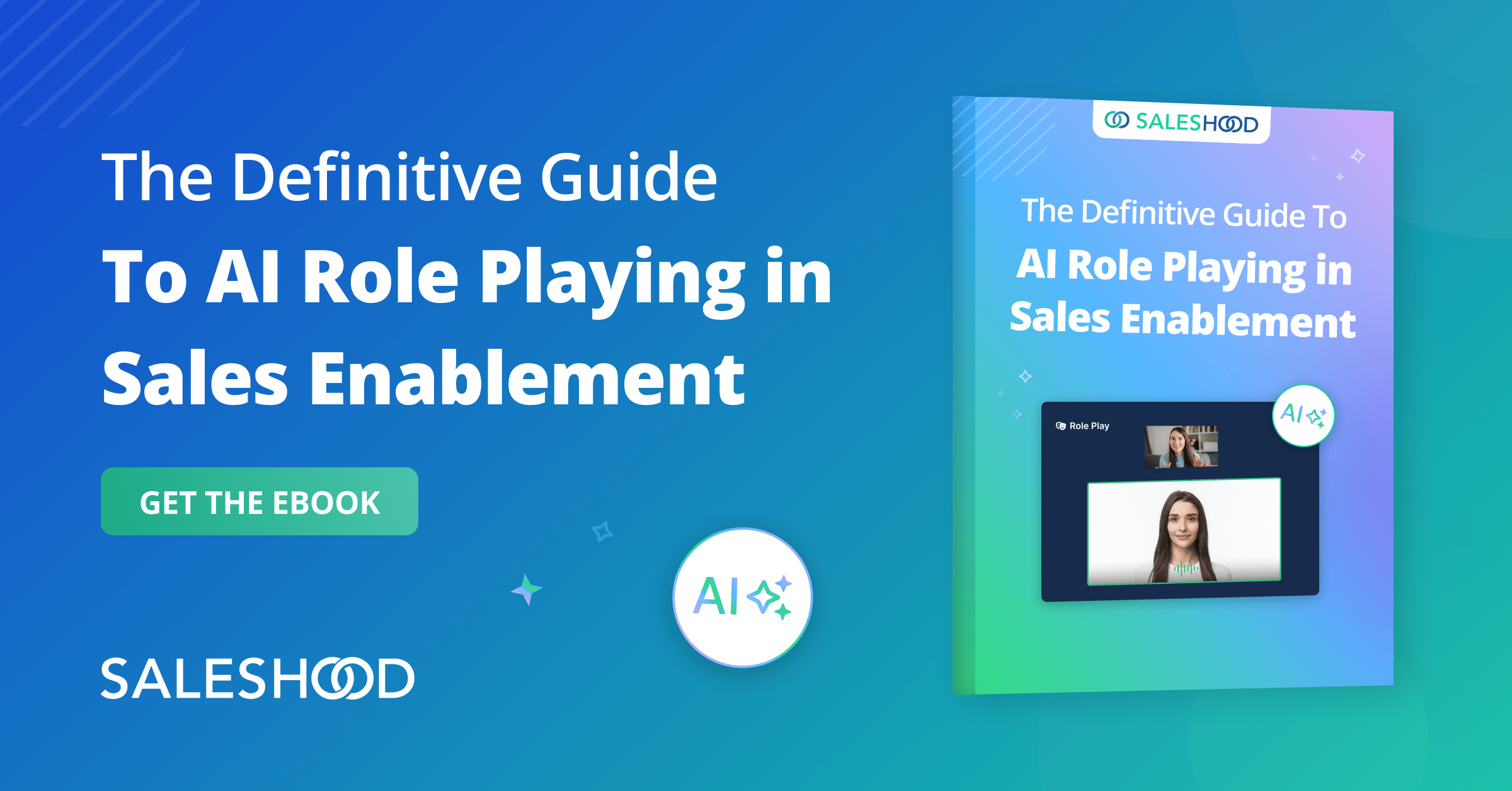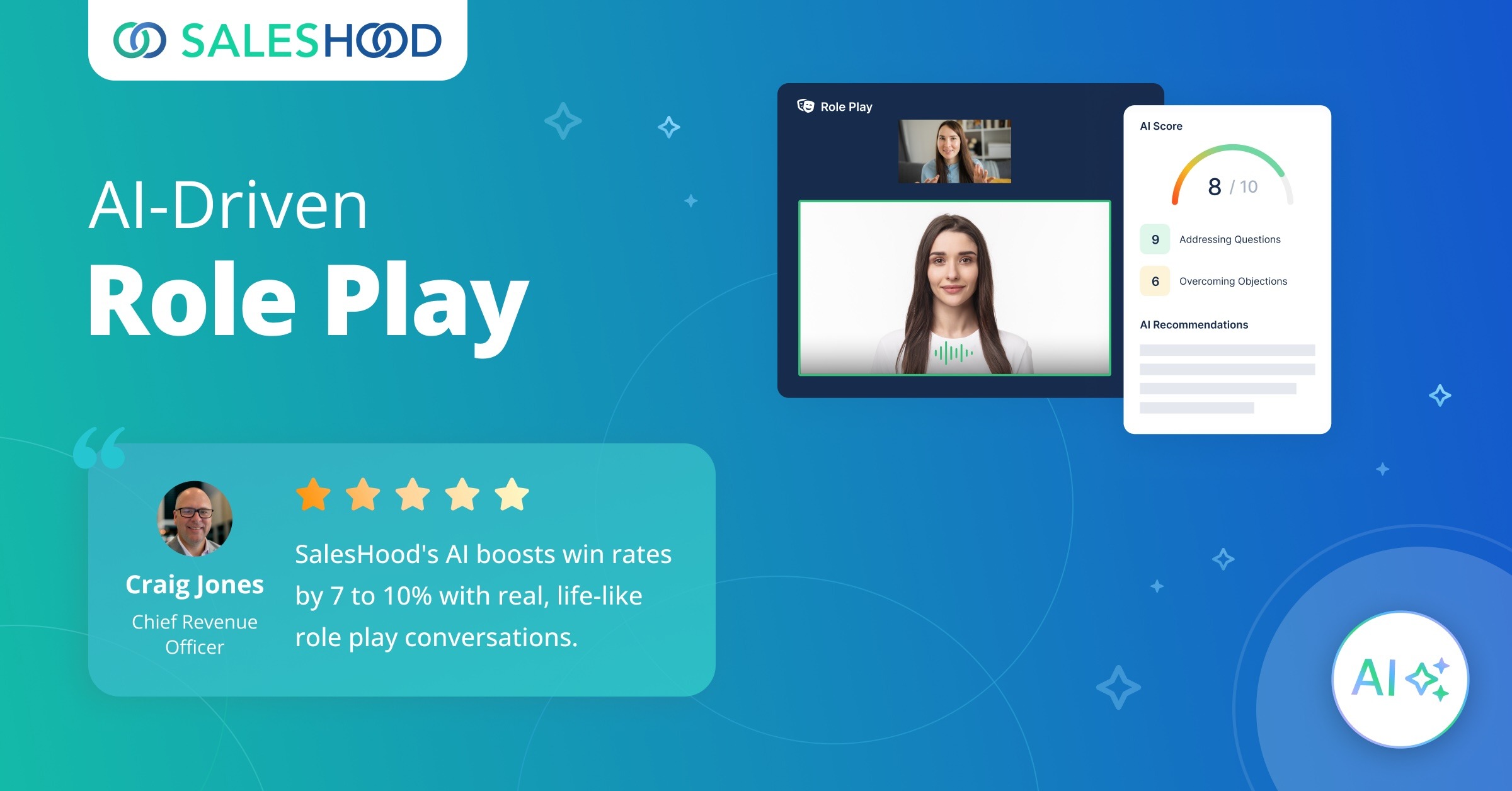Key Takeaways
|
|
|
|
|
Best Sales Training Software for Faster Onboarding and Shorter Ramp Time
Smart sales onboarding strategy accelerates sales performance and boosts quota attainment. Now, revenue leaders don’t need to wait for months before fresh talent contributes to the business. Participation rates and time to revenue can both be vastly improved
Research shows that 50% of training is forgotten within 24 hours, and up to 90% within a week if it isn’t reinforced. Historically, this has been a major obstacle to productivity. At a time when average ramp time stretches to 6–9 months, no sales leader can afford that kind of delay.
Sales training software is now solving these problems by centralizing onboarding. Modern AI-powered onboarding doesn’t just shorten ramp-up, it accelerates readiness, fuels quota attainment, and drives measurable growth.
Sales Training Software Centralizes Onboarding and Cuts Ramp Time
One of the most common onboarding pitfalls is fragmentation and decentralization of proven best practices. New hires juggle slide decks, outdated PDFs, and ad hoc coaching. This leads to confusion, inconsistency, and painfully slow productivity. Thankfully, with a modern sales training software, organizations can ensure that everything is centralized. How it works is simple.
New hires are plugged into a single, comprehensive learning path that covers what they need to know to get acquainted with the processes, product knowledge, and customer engagement essentials.
This is not done in a silo. The managers get visibility into progress of the new recruits while reps gain clarity on what exactly they need to do.
Not just that, when the new sellers know exactly what to focus on, leaders will speed up their readiness to graduate to the sales field, instead of firefighting sales training gaps.
AI-Powered Sales Training Software Builds Confidence Faster
Here’s the thing: onboarding and sales training isn’t just about stuffing sales reps with information, it’s about helping them apply it in the real world. And nothing accelerates application like practice, practice and more practice.
Traditional onboarding often relies on role plays with managers or peers. Of course, these are valuable but come with practical limitations. . There is a heavy dependence on the manager’s availability, This can also feel intimidating for new hires. Many salespeople don’t want to keep asking managers and peers for their time to practice and role plays.
But AI-powered role play changes that. For example, SalesHood’s AI Role Play creates a private, safe and judgment-free practice space where reps can rehearse cold call openers, objection handling, or discovery questions. Instant feedback highlights tone, pacing, and messaging accuracy, helping reps sharpen their skills without fear of embarrassment.
Now, how does this help? Sellers gain confidence weeks earlier. For BDRs and SDRs especially, this means they get on the phone with prospects much sooner than traditional onboarding allows. Instead of waiting months to test their skills, they’re alive, confident, and contributing to the pipeline in weeks. BDRs who are enabled with AI rola playing will books meetings faster. We’re seeing BDR ramp time drop from 2-3 months down to 1-2 weeks.
As a result, SalesHood customers have been able to boost win rates by 60%-120%.
The Best Sales Training Software Delivers Continuous Coaching
Here’s what most leaders miss: onboarding isn’t a one-and-done exercise. Without reinforcement, even the best onboarding programs collapse under the weight of the forgetting curve.
That’s why sales training software must deliver ongoing coaching, not just day-one content. AI makes this scalable and highly personalized too.. Instead of managers spending hours rehashing the same basics, AI coaching assistants automate practice scenarios, analyze performance, and track improvement over time.
Organizations using AI-powered enablement report measurable KPI improvements within 3–6 months, proving that continuous coaching pays off in both readiness and revenue.
The benefits of keeping teams aligned on messaging and sales processes is multi-pronged., These platforms ensure reps don’t just ramp faster but also that they stay tuned-in with the updates long after ramp-up ends.
Sales Training Software Drives Content Engagement and Readiness
Even the best-trained sellers stumble without the right content at their fingertips. That’s why engagement with sales content is a critical driver of readiness.
The best sales training software connects reps directly to competitive intel, product updates, and customer-facing materials. All this sales content is embedded in their workflow. With this in place, instead of scrambling for resources, reps always have the right message, at the right moment.
You will see that when your reps are able to continuously engage with updated playbooks and product knowledge, they are likely to ramp faster, close deals sooner, and avoid rookie mistakes in front of buyers.
Sales Onboarding Software Personalizes Training for Better Retention
Every sales rep has a different learning style and need. This is why one-size-fits-all onboarding doesn’t work. What a seasoned AE needs is vastly different from what a first-time SDR needs. The solution is AI-driven personalization.
Sales onboarding software now simulates real buyer interactions, tailoring practice and feedback to individual skills. A rep struggling with cold call openers gets targeted practice, while another who struggles with objection handling gets personalized coaching.
Not just efficient, it’s sticky. Personalized training ensures relevance and hence boosts engagement by up to 60% compared to generic messaging. This further drives retention and results.
Read the case study of StarCompliance that transformed its onboarding by using SalesHood’s platform. Its primary goal was to unify sales training, embed AI-driven pitch practice, and reinforce skills through continuous coaching. The impact was undeniable: a 2x increase in average selling price, a 17% lift in new logo win rates, and a 35% reduction in sales cycle length.
By turning onboarding into a continuous learning journey, StarCompliance ramped new hires faster, boosted confidence, and built a culture of consistent quota attainment.
Measuring Success with Sales Training Software
Another reason sales leaders are leaning into AI-powered sales onboarding software is ‘Measurement’.
Traditional onboarding sales training leaves managers guessing: Is this rep ready? Did they retain what we covered? Will they hold their own in front of a customer?
The best sales training software removes the guesswork. Leaders can measure:
- Practice frequency: How often reps are role-playing and reinforcing skills.
- Improvement over time: Clear visibility into progress against competencies.
- Readiness-to-revenue link: Direct correlation between training, quota attainment, and win rates.
For the first time, enablement leaders can tie onboarding efforts directly to business outcomes. It’s the kind of proof every CRO is looking for.
The Future of Ramp-Up with Sales Training Software
The best sales training software today doesn’t stop at onboarding. It pushes reps to readiness faster, builds real confidence, and turns that into revenue. AI role-play, continuous coaching, and performance tracking are no longer extras. They’re becoming the way modern teams ramp.
The leaders who lean in aren’t just trimming a few weeks off onboarding. They’re unlocking quicker revenue, lifting win rates, and giving their teams the confidence to win again and again. The future of sales onboarding software isn’t off in the distance. It’s already happening. The real choice is whether you lead it or watch others pull ahead.
If you want to see what cutting ramp time in half actually looks like, book a demo with SalesHood. The new-age of onboarding sales training is waiting.
FAQs on Sales Training Software
- What’s the difference between sales training software and sales onboarding software?
Sales training software covers the full spectrum of learning and coaching, while sales onboarding software is focused on helping new hires ramp up. The best platforms combine both so reps don’t just get started faster, they keep improving long after onboarding ends. - Can sales training software really replace live coaching?
Not at all. It doesn’t replace managers, it multiplies their impact. Managers still coach, but the software handles the repetitive practice and tracking, freeing leaders to focus on higher-value feedback. - Is sales training software worth it for smaller sales teams?
Yes. Smaller teams often feel onboarding pain the most because managers wear many hats. A platform gives them consistent training, easy access to sales content, and the kind of reinforcement that’s hard to do manually. Even a few reps ramping faster makes a noticeable revenue impact.



